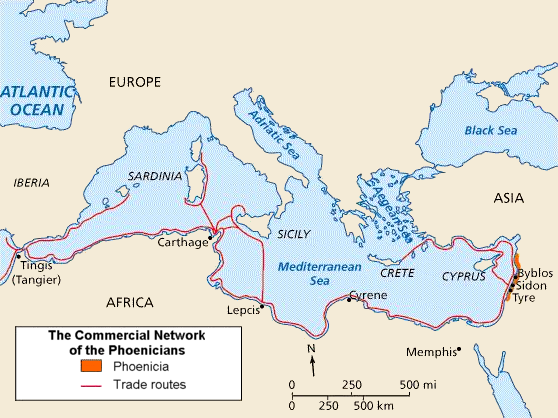"One of every five displaced persons in the world is Syrian." –CNN
Though inconclusive, much of ancient tradition holds that the continent of Europe gained its name from Europa.
"As for Europe, no one can say whether it is surrounded by the sea or not, neither is it known whence the name of Europe was derived, nor who gave it name, unless we say that Europe was so called after the Tyrian Europa, and before her time was nameless, like the other divisions. But it is certain that Europa was an Asiatic, and never even set foot on the land which the Greeks now call Europe, only sailing from Phoenicia to Crete, and from Crete to Lycia." ––Herodotus, The Persian Wars
The myth still haunts the modern world.
A performer depicting Europa, a Phoenician princess
rides a white bull representing the Greek god, Zeus during the Opening
Ceremony for the Baku 2015 European Games at the Olympic Stadium on June
12, 2015 in Baku, Azerbaijan…Credit: Michael Steele

Compare ancient Phoenician trade routes (above) with today's refugee migration (below).
Traveling
to Europe by land is very difficult, so most Syrians begin their
journey in northern Africa, where smuggling networks send them north by
sea.Joe Burgess/The New York Times
This is the sad, mythic, irony of the present migration of Syrian refugees north in search of sanctuary: they are the ancestors of Europa.
The Europa myth is likely a reference to the migration of cultural cosmology. Europa is closely related to the Phoenician Astarte, 'Queen of the Stars,' and associated with the moon. The bull cults of Crete derive from earlier goddess worship in the Middle East. The moon-cow and the maiden spread throughout the ancient world and left their traces in shreds and tatters of modern memory.
The cow jumped over the moon....
Today's refugees are being followed by that moon-shadow of Europa. If we can remember our mythic past, we might begin to see through the false separations of our ethnicity and into the true union of our humanity.
No comments:
Post a Comment